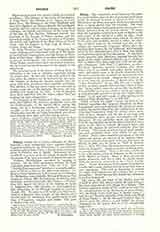

Patara, titular see of Lycia, suffragan of Myra, formerly a large commercial town, opposite Rhodes. Founded perhaps by the Phoenicians, it received later a Dorian colony from Crete; a legend traces its foundation to Patarus, son of Apollo. Renowned for its wealth, it was more so for its temple of Apollo where the oracles of the god were rendered during the winter. Ptolemy Philadelphus extended it, naming it Arsinoe. On his third missionary journey St. Paul embarked from here for Tyre (Acts, xxi, 1-3). The “Notitiae Episcopatuum” mention it among the suffragans of Myra as late as the thirteenth century. Le Quien (Oriens christianus, I, 977) names seven bishops: St. Methodius, more probably Bishop of Olympus; Eudemus, at Nicaea, 325; Eutychianus, at Seleucia, 359; Eudemus, at Constantinople, 381; Cyrinus, at Chalcedon, 451, signed the letter of the bishops of Lycia to Emperor Leo, 458; Licinius, at Constantinople, 536; Theodulus, at the Photian Council of Constantinople, 879. Its ruins are still visible near Djelemish, vilayet of Koniah; they consist of the remains of a theatre built by Antoninus Pius, public baths of the time of Vespasian, temples, and tombs. The port is choked with sand.
PÉTRIDÉS

